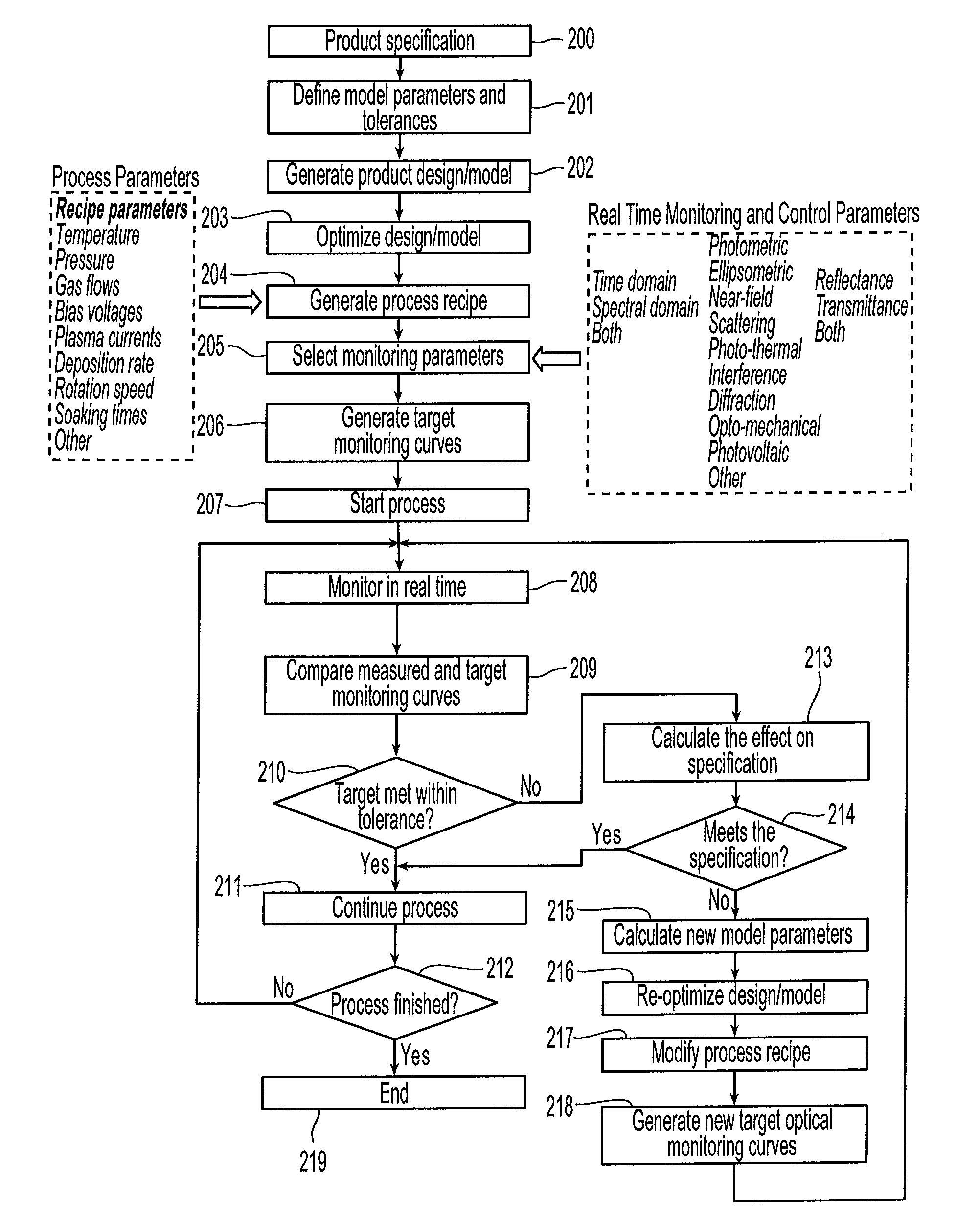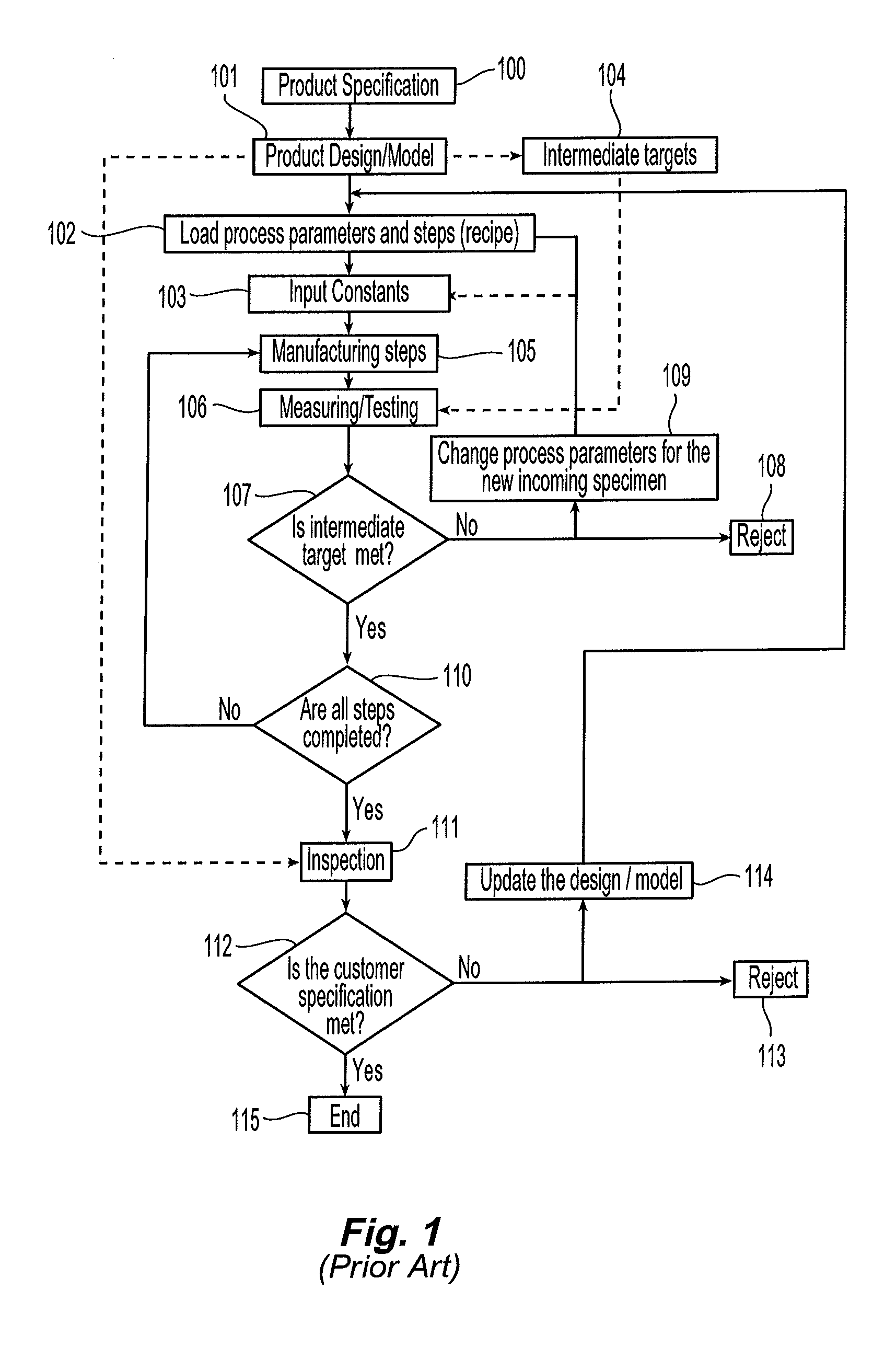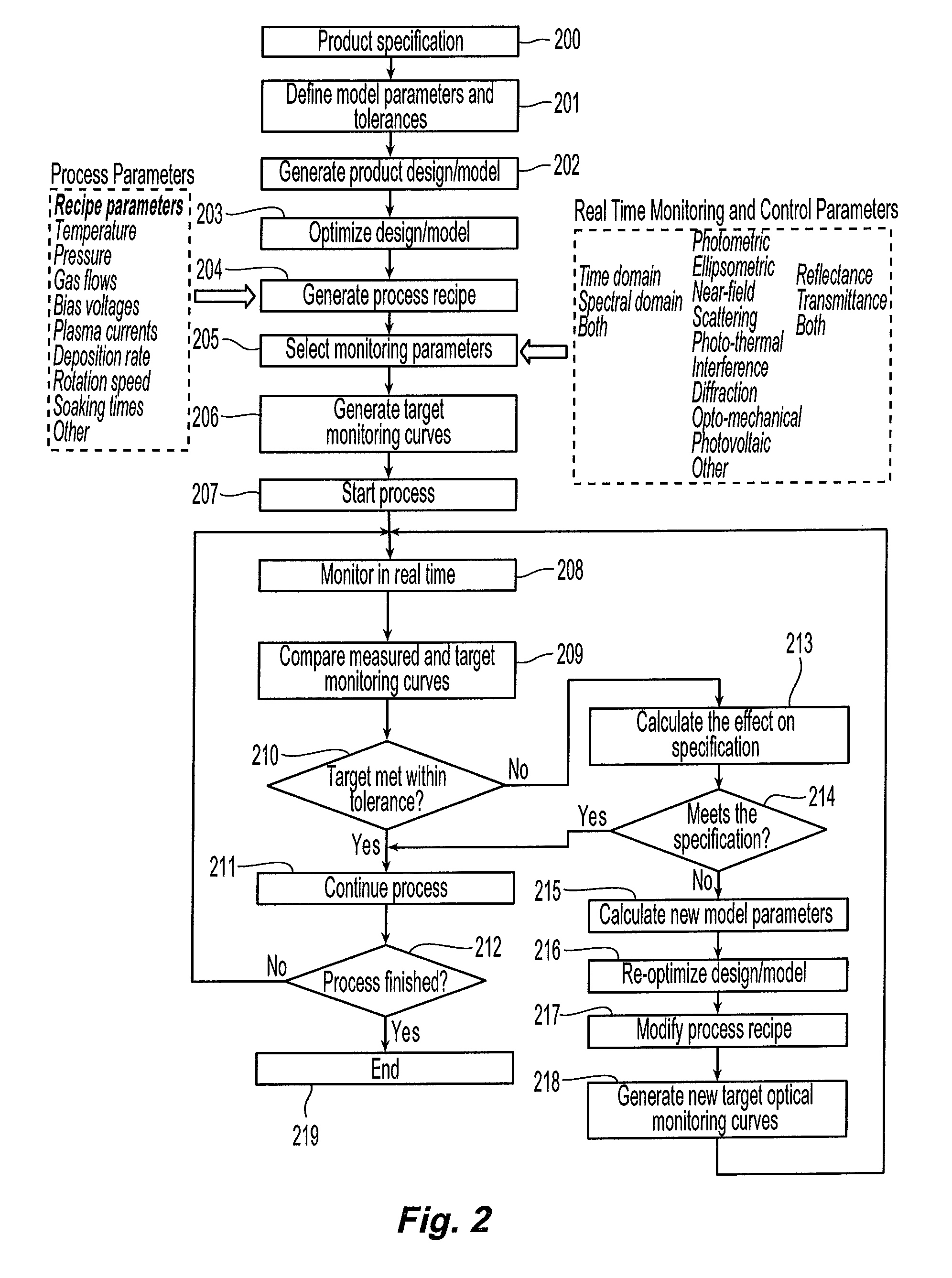Methods and systems for control of a surface modification process
a technology of surface modification and control method, applied in the direction of total factory control, programme control, sustainable manufacturing/processing, etc., can solve the problems of forming unwanted substances on the surface, the quality of the modified surface or specimen gradually deviating from the target value, and the deviation of the target value over time, so as to facilitate real-time optical control, increase manufacturing yield, and enhance productivity
- Summary
- Abstract
- Description
- Claims
- Application Information
AI Technical Summary
Benefits of technology
Problems solved by technology
Method used
Image
Examples
Embodiment Construction
[0116]The various aspects of the preferred embodiments are now described with reference to the annexed drawings, wherein the numerals refer to like or corresponding elements throughout. It should be understood, however, that the drawings and detailed description relating thereto are not intended to limit the claimed subject matter to the particular form disclosed. Rather, the intention is to cover all modifications, equivalents and alternatives falling within the spirit and scope of the claimed subject matter.
[0117]As used herein, the term “product specification” is intended to include the description of the necessary attributes a finished product must attain in order for the product to be used for its intended purposes.
[0118]The term “product design” refers to a specific product formula or product structure the manufacturing process is required to follow in order to attain the necessary specifications at intermittent and final step of the deposition process. An example of a product...
PUM
 Login to View More
Login to View More Abstract
Description
Claims
Application Information
 Login to View More
Login to View More - R&D
- Intellectual Property
- Life Sciences
- Materials
- Tech Scout
- Unparalleled Data Quality
- Higher Quality Content
- 60% Fewer Hallucinations
Browse by: Latest US Patents, China's latest patents, Technical Efficacy Thesaurus, Application Domain, Technology Topic, Popular Technical Reports.
© 2025 PatSnap. All rights reserved.Legal|Privacy policy|Modern Slavery Act Transparency Statement|Sitemap|About US| Contact US: help@patsnap.com



